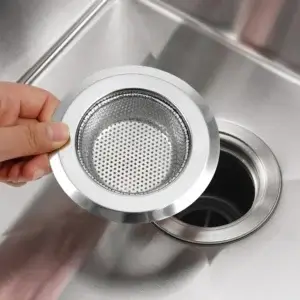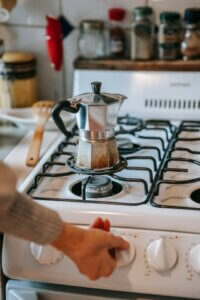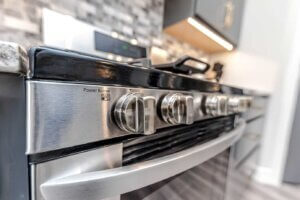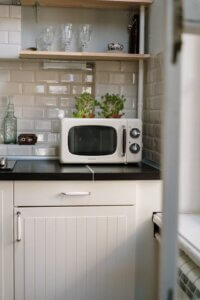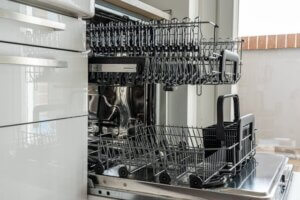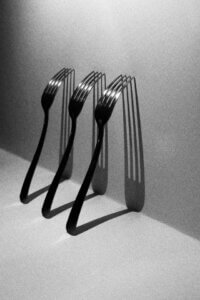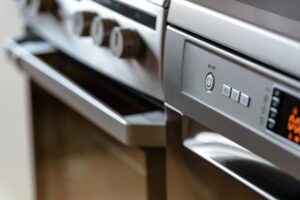Koshering the kitchen for Passover and after using non-kosher food is an essential process for any Jewish household to ensure that the kitchen is prepared and fit for kosher use according to halacha. The following guide explains how to kosher all key kitchen appliances and surfaces, including countertops, sinks, faucets, sink strainers, stoves, ovens, and microwaves. Additionally, it explains how to kosher a kitchen after it has been used for non-kosher food.
—————————————
Koshering the Countertops
Countertops are one of the first areas that require koshering. For koshering for Passover or after non-kosher use, thoroughly clean the countertop with soap and hot water. After cleaning, pour boiling water over the surface quickly and evenly. The water must be at maximum heat to ensure proper koshering. It is advisable to refrain from using the countertop for 24 hours before koshering. If the surface is made of materials such as granite or marble, a thorough and efficient cleaning process is necessary. Covering the countertop with plastic or foil is also an option to prevent direct contact with chametz or non-kosher food.
Koshering the Countertops – More information >>
—————————————
Koshering the Sink
The sink is a place where food residue may accumulate, so it must be thoroughly cleaned with hot water and soap. After cleaning, pour boiling water over the sink at maximum heat to ensure it is properly koshered. To guarantee effective koshering, refrain from using the sink for 24 hours before the process. If the sink is made of porous material, such as stone or granite, it may not be possible to kosher it for Passover, and it should be covered or used only for non-Passover-related items. If the sink was used for non-kosher food, ensure it is completely clean before koshering.
Koshering the Sink – More information >>
—————————————
Koshering the Faucets
Faucets must be thoroughly cleaned. If they were used with hot liquids containing chametz, pour boiling water over them at maximum heat to kosher them properly. Koshering faucets typically involves hot water and a thorough rinse. Refrain from using the faucets for 24 hours before koshering to ensure there are no chametz or non-kosher residues.
Koshering the Faucets – More information >>
—————————————
Koshering the Sink Strainer
The sink strainer may collect food particles, including chametz. Clean it thoroughly with soap and hot water, then pour boiling water over it at maximum heat. Avoid using the strainer for 24 hours before koshering to ensure no chametz or non-kosher residue remains.
Koshering the Sink Strainer – More information >>
—————————————
Koshering the Stove
Koshering the stove for Passover or after non-kosher use requires thoroughly cleaning the burners, grates, and all removable parts with soap and water. After cleaning, burn the flames on high heat using a blowtorch or let the burners reach a temperature of approximately 400°C (750°F). To ensure proper koshering, refrain from using the stove for 24 hours before koshering. If there are small crevices or hard-to-clean areas in the burners, use a welding torch or direct flame to burn any remaining residue.
Koshering the Stove – More information >>
—————————————
Koshering the Oven
To kosher an oven for Passover or after non-kosher use, first clean it thoroughly with soap and hot water. After cleaning, turn the oven to its highest temperature (around 250°C or 480°F) for an hour to burn off any remaining food particles. To ensure proper koshering, avoid using the oven for 24 hours before the process. If the oven has a self-cleaning function, activate it, as it generates extremely high temperatures that eliminate all chametz or non-kosher residue.
Koshering the Oven – More information >>
—————————————
Koshering the Microwave
The microwave requires specific koshering after being used with chametz or non-kosher food. First, clean it thoroughly with soap and hot water. Then, place a bowl of water with a small amount of soap inside the microwave and heat it for several minutes. After heating, wipe down the interior with a damp cloth. Avoid using the microwave for 24 hours before koshering to ensure no chametz or non-kosher residue remains.
Koshering the Microwave – More information >>
—————————————
Koshering the Dishwasher
When koshering a dishwasher for Passover or after non-kosher use, begin by thoroughly cleaning all parts, including the racks, walls, and filter, to remove any food residue. Allow the dishwasher to sit unused for 24 hours before the koshering process. Then, place a dishwasher tablet inside and run a full wash cycle with the highest temperature setting using an empty dishwasher. If possible, add boiling water directly into the machine to enhance the koshering process. Some have the custom to replace the racks or use an insert to avoid direct contact with chametz or non-kosher food.
Koshering the Dishwasher – More information >>
—————————————
Koshering Silverware and Utensils
When koshering silverware and utensils for Passover or after non-kosher use, start by thoroughly cleaning them with soap and hot water, ensuring that no food residue remains. Allow them to sit unused for 24 hours before koshering. Then, immerse the utensils completely in a pot of boiling water. The water must be at a rolling boil to ensure proper koshering. After immersion, rinse the utensils with cold water. If possible, use a separate kosher-for-Passover pot for this process. Some have the custom to replace certain utensils or cover handles to avoid direct contact with chametz or non-kosher food.
—————————————
Koshering Pots and Pans
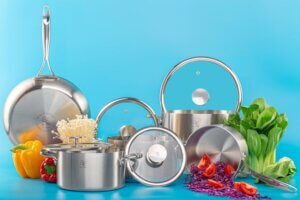
When koshering pots and pans for Passover or after non-kosher use, begin by thoroughly cleaning them with soap and hot water, ensuring that no food residue remains. Allow them to sit unused for 24 hours before koshering.
For metal pots that were used with liquid-based cooking, immerse them completely in a larger pot of boiling water (hagalah). The water must be at a rolling boil for proper koshering. After immersion, rinse the pot with cold water.
For frying pans or pots used with dry heat, such as roasting or frying without liquid, a more intense process called libun (heating until red-hot) is required. If this is not feasible, it is advisable to use new or designated Passover cookware.
Koshering Pots and Pans – More information >>
—————————————
Rinsing with Cold Water After Koshering
After koshering any utensil or surface with boiling water, rinse it with cold water to remove any remaining food particles that may have been released during the process.
Conclusion
Koshering the kitchen for Passover and after non-kosher use requires an organized approach, precision, and attention to detail. Each appliance and surface requires a different method, and adhering to halacha and proper guidelines ensures the kitchen is ready for kosher use.
For any questions or uncertainties, consult a rabbi or halachic authority to ensure that the kitchen is properly prepared according to Jewish law.
Nachman Harris. Kosher Expert.
Available for any of your questions





